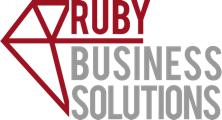Understanding the concept of a holding company is important for both business owners, investors, and financial advisors. This comprehensive guide will delve into the intricacies of holding companies, their structure, benefits, drawbacks, tax obligations and their role in the Canadian business landscape.
What is a holding company?
A holding company is a type of business entity that doesn’t produce its own goods or services. Instead, its primary function is to own shares in other companies, known as subsidiaries. The HoldCo exercises control over these subsidiaries, often influencing their management and operations.
Types of holding companies
Holding companies come in various forms, each with its unique characteristics and functions. The most common types include:
- Pure Holding Company: This type of structure solely owns shares of other companies and doesn’t engage in any other business activities.
- Mixed Holding Company: A mixed HoldCo not only owns shares in other companies but also conducts its own business operations.
- Immediate and Intermediate Holding Companies: These are holding companies owned by other holding companies or larger businesses.
Example of a Canadian holding company
A well-known example of a holding company in Canada is George Weston Limited. This holding company has significant stakes in two major subsidiaries:
- Loblaw Companies Limited: This is Canada’s largest food retailer, operating under various banners including Loblaws, No Frills, and Shoppers Drug Mart.
- Choice Properties Real Estate Investment Trust: This is one of the largest real estate investment trusts in the country, owning a portfolio that includes retail properties, industrial assets, and office buildings.
Through George Weston Limited, the Weston family has been able to diversify their investments and exert control over a significant portion of the Canadian retail landscape.
Holding company structure
The structure of a holding company involves a parent company (the HoldCo) and one or more subsidiaries. The holding company owns a controlling interest in these subsidiaries, allowing it to influence their operations and management. The subsidiaries are allowed to come from different industries which provides a diversified business portfolio for the company.
How does a holding company work?
A holding company works by acquiring a controlling interest in other companies. This control allows it to influence the subsidiaries’ management and strategic decisions. The HoldCo can earn revenue through dividends and profit shares from its subsidiaries. It can also raise funds by selling its own shares or borrowing money, which can then be invested in existing or new subsidiaries.

Advantages of a holding company
Holding companies offer several benefits, including:
- Tax Planning: Holding companies can provide significant tax advantages, such as tax-free dividends from subsidiaries and lower tax rates on certain types of income.
- Limited Liability and Asset Protection: By separating the ownership of assets among different subsidiaries, holding companies can limit the liability exposure of each entity.
- Lifetime Capital Gain Exemptions: In Canada, a holding company can take advantage of lifetime capital gains exemptions, potentially saving significant amounts in taxes.
- Ease of Operation: With centralising control, holding companies can simplify the management and operation of all the businesses they have an ownership interest in.
- Facilitating Future Expansion: Investments into different industries or acquiring new businesses can be made through this business structure, facilitating business expansion and diversification.
Disadvantages of a holding company
Despite their benefits, holding companies also have some drawbacks.
- Increased Costs: The process of setting up and maintaining a holding company can be costly, involving legal, accounting, and administrative expenses.
- Complex Structure: Managing a holding company and its subsidiaries can be complex, requiring a high level of financial and managerial expertise.
- Regulatory Restrictions: This type of legal structure is subject to various regulatory requirements and restrictions, which can limit their operations and investment activities.
Holding company vs operating company
The main difference between a holding company and an operating company is that the HoldCo owns shares in other companies, whilst an operating company engages in the production of goods or services.
The primary purpose of a HoldCo is to control and manage its subsidiaries, while an operating company focuses on its business operations. The choice between setting up a holding company or an operating company depends on your business goals, industry, and specific circumstances.
Holding company vs family trust
A holding company and a family trust are both effective vehicles for managing and protecting assets, but they operate differently and serve distinct purposes. They also have different legal and tax implications.
As mentioned, a HoldCo owns controlling interests in other companies whereas a family trust is a legal arrangement where a trustee holds and manages assets for the benefit of beneficiaries, typically family members. Family trusts are often used for estate planning purposes, providing a means to transfer wealth across generations while potentially reducing exposure to taxes and creditors.
Best holding company jurisdictions
The best jurisdiction in Canada for a holding company depends on factors like tax laws, the legal environment, political stability, and business infrastructure. In Canada, provinces like Ontario, British Columbia, and Alberta are popular jurisdictions for holding companies due to their favourable business and tax laws.

Bookkeeping & accounting requirements
Holding companies, like any other businesses, have specific bookkeeping and accounting requirements to ensure financial transparency, regulatory compliance, and effective management. Here are some of the key requirements to consider:
Financial record keeping
Accurate and up-to-date records of all financial transactions must be maintained. This includes records of income, expenses, assets, liabilities, and equity transactions.
Financial statements
Holding companies must prepare financial statements, including a balance sheet, income statement, and cash flow statement.
Consolidated financial statements
If a holding company owns more than 50% of another company, it’s considered to have control over that company, making it a subsidiary. In such cases, the company is required to prepare consolidated financial statements. These statements combine the financials of the HoldCo and its subsidiaries into a single set of statements, providing a comprehensive view of the entire corporate group’s financial status.
Tax filings
Corporate income tax returns must be filed annually. Worldwide income, including dividends received from other corporations, interest, rents, and royalties must be declared.
Audit or review
Depending on the size and nature of the holding company, an annual audit or review of the financial statements by an independent accountant may be required. This provides assurance to stakeholders that the financial statements are accurate and comply with accounting standards.
Compliance with accounting standards
Holding companies in Canada must comply with the Canadian Generally Accepted Accounting Principles (GAAP), specifically the International Financial Reporting Standards (IFRS) or Accounting Standards for Private Enterprises (ASPE), depending on the size and nature of the company.
Internal controls
Robust internal controls are required to ensure the accuracy and reliability of financial reporting, safeguard assets, and prevent fraud.
Given the complexity of these requirements, many holding companies choose to work with professional accountants or bookkeepers. Services like online bookkeeping can be particularly helpful in maintaining accurate and compliant financial records.

Taxation of holding companies in Canada
In Canada, a holding company is subject to corporate tax on its worldwide income. This includes dividends received from other corporations, interest, rents, and royalties. However, holding companies can also benefit from certain tax advantages:
Holding company tax free dividends
One of the significant tax advantages for holding companies in Canada is the tax-free inter-corporate dividends. Generally, if a HoldCo receives dividends from its Canadian subsidiary, these dividends can be received tax-free. This allows for income to be moved around within the corporate group without triggering additional corporate tax.
Capital gains exemption
In certain circumstances, shareholders of a holding company may be able to utilise their Lifetime Capital Gains Exemption (LCGE) when they sell their shares, limiting the CGT they pay.
Income splitting
A holding company can be used to split income among family members. By having different classes of shares, dividends can be issued to family members in lower tax brackets, reducing the overall tax liability.
Capital losses
If a holding company realises a capital loss, it can be used to offset capital gains elsewhere in the group, reducing the overall tax liability.
Small business deduction
Holding companies that qualify as a Canadian-controlled private corporation (CCPC) may be eligible for the small business deduction, which provides a lower tax rate on the first CAD $500,000 of active business income.
The tax rules surrounding holding companies are complex, and there can be potential tax traps. For example, certain types of income, such as rental income or investment income, may be subject to a higher rate of tax within a corporation. Extracting money from the corporation can also trigger tax. Therefore, it’s crucial to seek professional tax advice when setting up and managing a HoldCo.
How to create a holding company in Canada
Creating a holding company in Canada involves several steps and legal requirements. Here’s a detailed look at the process.
Step 1. Choose the type of business entity
The first step is to decide the type of business entity you’ll use. Most holding companies are incorporated as corporations.
Step 2. Decide on the jurisdiction
You’ll need to decide where to establish your HoldCo. Each province in Canada has its own rules and regulations for businesses, so you’ll need to choose a jurisdiction that best suits your business needs.
Step 3. Name Your company
Your holding company name must be unique and not be in use by another company. You can check the availability of a company name through the federal or provincial registry.
Step 4. Registration
Once you’ve chosen a name, you’ll need to register your company with the relevant authorities. This typically involves filing articles of incorporation and paying a registration fee. The articles of incorporation will include details about the company, such as its name, address, and information about its shares and directors.
Step 5. Set up the management structure
Setting up a management structure for your company includes appointing directors and officers. The directors are responsible for overseeing the business’ activities, while the officers (such as the CEO and CFO) manage the day-to-day operations.
Step 6. Issue shares
After your company is registered, you’ll need to issue shares. These shares represent ownership in the holding company. You can issue different classes of shares, each with its own rights and restrictions.
Step 7. Acquire shares in other companies
Finally, to establish subsidiaries, your HoldCo will need to acquire a controlling interest in other companies. This can be done through a variety of methods, such as purchasing shares on the open market or through private transactions.

Using a holding company to buy real estate in Canada
We thought it would be worth mentioning this, because some business owners and investors like to use a holding company to buy real estate in Canada. This strategy offers several benefits such as liability protection, tax planning, estate and privacy. At the same time though, it’s important to be aware of the legal and financial considerations, such as the cost and complexity of setting up this type of structure, maintaining it, and potential land transfer and capital gains taxes. Make sure you consider both the pros and cons before going down this road.
Should a SME create a holding company?
While holding companies offer several benefits, they also come with their fair share of challenges and complexities. The decision to establish your own HoldCo will depend on the nature of your business, your growth plans, and your own personal financial situation.
It’s essential that you seek professional advice before, during and after you establish a holding company in Canada.
If you have further questions about this, get in touch with our team. We’ll be happy to assist.







